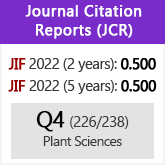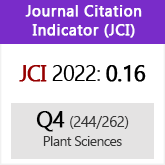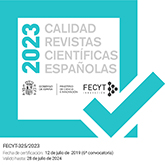Arthropod gut symbionts from the Balearic Islands: Majorca and Cabrera. Diversity and biogeography
DOI:
https://doi.org/10.3989/ajbm.2216Keywords:
biogeography, symbiosis, gut fungi, insularity, Kickxellomycotina, Mesomycetozoa, taxonomy, ZygomycotaAbstract
This study includes a catalogue with all the current data concerning the presence of trichomycetes (sensu lato) in Majorca and Cabrera, as well as information on the biology, ecology and biogeographic implications of the insularity for each taxon of these arthropod-gut symbionts. Of the 13 species here reported, 10 are new for the Balearic Islands, including 4 Mesomycetozoan, of which 3 Eccrinales (Astreptonema gammari, Eccrinidus flexilis, Parataeniella dilatata), 1 Amoebidiales (Paramoebidium curvum) and 6 kixckellomycotina Harpellales (Genistellospora homothallica, Harpella melusinae, Smittium culisetae, S. simulii, Stachylina grandispora and St. nana); the additional 3 were previously reported elsewhere: Asellaria ligiae (Aslleariales), Legeriomyces rarus and Stipella vigilans (Harpellales), but are here included as indissoluble part of the present Balearic catalogue. All taxa are commented, illustrated and their biogeographic implications are discussed.
Downloads
References
Adl, S.M., Simpson, A.G., Farmer, M.A., Andersen, R.A., Anderson, O., Barta, J.R., Bowser, S.S., Brugerolle, G., Fensome, R.A., Fredericq, S., James, T.Y., Karpov, S., Kugrens, P., krug, J., Lane, C.E., Lewis, L.A., Lodge, J., Lynn, D.H., Mann, D.G., Mccourt, R.M., Mendoza, L., Moestrup, L.Ø., Mozley-Standridge, S.E., Nerad, T.A., Shearer, C.A., Smirnov, A.V., Spiegel, F.W. & Taylor, M.F. 2005. The New Higher Level Classification of Eukaryotes with Emphasis on the Taxonomy of Protists. Journal of Eukaryota Microbiology 52: 399-451. doi:10.1111/j.1550-7408.2005.00053.x PMid:16248873
Benny, G.L. & O’Donnell, K. 2000. Amoebidium parasiticum is a protozoan, not a Trichomycete. Mycologia 92: 1133-1137. doi:10.2307/3761480
Cafaro, M.J. 2005. Eccrinales (Trichomycetes) are not fungi, but a clade of protists at the early divergence of animals and fungi. Molecular Phylogenetic Evolution 35: 21-34. doi:10.1016/j.ympev.2004.12.019 PMid:15737579
De Queiroz, A. 2005. The resurrection of oceanic dispersal in historical biogeography. Trends in Ecology and Evolution 20: 68-73. doi:10.1016/j.tree.2004.11.006
Desmet, P. & Cowling, R. 2004. Using the species–area relationship to set baseline targets for conservation. Ecology and Society 9: 11. [online] URL: http://www.ecologyandsociety.org/vol9/iss2/art11/
Gillespie, R.G. & Roderick G.K. 2002. Arthropods on Islands: Colonization, Speciation and Conservation. Annual Review of Entomology. 47: 595-632. doi:10.1146/annurev.ento.47.091201.145244 PMid:11729086
Girbal, J. & Santamaria, S. 1998. Trichomycetes (Fungi, Zygomycotina) comensals de larves de Simuliidae (Diptera) a la Península Ibèrica. Acta Botanica Barcinonensia 45: 49-56.
González, A. 2000. Community relaxation in fragmented landscapes. The relation between species richness, area and age. Ecology letters 3: 441-443. doi:10.1046/j.1461-0248.2000.00171.x
Hibbett, D.S., Binder, M., Bischoff, J.F., Blackwell, M., Cannon, P.F., Eriksson, O.E., Huhndorf, S., James, T., Kirk, P.M., Lücking, R., Lumbsch, T., Lutzoni, F., Matheny, P.B., Mclaughlin, D.J., Powell, M.J., Redhead, S., Schoch, C.L., Spatafora, J.W., Stalpers, J.A., Vilgalys, R., Aime, M.C., Aptroot, A., Bauer, R., Begerow, D., Benny, G.L., Castlebury, L.A., Crous, P.W., Dai Y. Cheng, Gams, W., Geiser, D.M., Griffith, G.W., Gueidan, C., Hawksworth, D.L., Hestmark, G., Hosaka, K., Humber, R.A., Hyde, K., Ironside, J.E., Kõljalg, U., Kurtzman, C.P., Larsson, K. Henrik, Lichtwardt, R.W., Longcore, J., Miadlikowska, J., Miller, A., Moncalvo, J. Marc, Mozley-Standridge, S., Oberwinkler, F., Parmasto, E., Reeb, V., Rogers, J.D., Roux, C., Ryvarden, L., Sampaio, J., Paulo, Schu.ssler, A., Sugiyama, J., Thorn, R.G., Tibell, L., Untereiner, W.A., Walker, C., Wang, Z., Weir, A., Weiss, M., White, M.M., Winka, K., Yao, Y., Jian & Zhang, N. 2007. A higher-level phylogenetic classification of the Fungi. Mycological Research 111: 509-547. doi:10.1016/j.mycres.2007.03.004 PMid:17572334
Jacob U. 2003. Africa and its Ephemeroptera: Remarks from a biogeographical view. In: Gaino E. (ed.), Research update on Ephemeroptera & Plecoptera: 317-325. Università di Perugia. Perugia, Italy.
Labeyrie, D.P., Molloy, R.W. & Lichtwardt, R.W. 1996. An investigation of Harpellales (Trichomycetes) in New York state blackflies (Diptera: Simuliidae). Journal of Invertebrate Pathology 6: 293-298. doi:10.1006/jipa.1996.0099 PMid:8954818
Léger, L. & Duboscq, O. 1906. L’évolution des Eccrina des Glomeris. Comptes Rendus Hebdomadaires des Séances de l’Académie des Sciences de Paris 142: 590.
Léger, L. & Duboscq, O. 1929. Harpella melusinae n. g. sp. Entophyte eccriniforme parasite des larves de Simulie. Comptes Rendus Hebdomadaires des Séances de l’Académie des Sciences de Paris 188: 951-954.
Léger, L. & Duboscq, O. 1933. Eccrinella (Astreptonema?) gammari Lég. et Dub. Eccrinide des Gammares d’eau douce. Archives de Zoologie Expérimentale et Générale 75: 283-292.
Léger, L. & Gauthier, M. 1932. Endomycètes nouveaux des larves aquatiques d’Insectes. Comptes Rendus Hebdomadaires des Séances de l’Académie des Sciences de Paris 194: 2262-2265.
Léger, L. & Gauthier, M. 1935. La spore des Harpellacees (Léger et Duboscq), Champignons parasites des Insectes. Travaux du Laboratoire d’Hydrobiologie et de Pisciculture de l’Université de Grenoble 27: 3-6.
Lichtwardt, R.W. 1964. Axenic culture of two new species of branched Trichomycetes. American Journal of Botany 51: 836-842. doi:10.2307/2439889
Lichtwardt, R.W. 1972. Undescribed genera and species of Harpellales (Trichomycetes) from the guts of aquatic insects. Mycologia 64: 167-197. doi:10.2307/3758025
Lichtwardt, R.W. 1973. The Trichomycetes: what are their relationships? Mycologia 65: 1-20. doi:10.2307/3757781
Lichtwardt, R.W. 1984. Species of Harpellales living within the guts of aquatic Diptera larvae. Mycotaxon 19: 529-550.
Lichtwardt, R.W. 1986. The Trichomycetes: Fungal Associates of Arthropods. Springer-Verlag, New York. 343 pp.
Lichtwardt, R.W. 1997. Costa Rican gut fungi (Trichomycetes) infecting lotic insect larvae. Revista de Biología Tropical 45: 1339-1383.
Lichtwardt, R.W., Kobayasi, Y. & Indoh, H. 1987. Trichomycetes of Japan. Transactions of the Mycological Society of Japan 28: 359-412.
Lichtwardt, R.W. & Williams, M.C. 1992. Tasmanian Tricho mycete gut fungi in aquatic insect larvae. Mycologia 84: 384-391. doi:10.2307/3760190
Lichtwardt, R.W., Cafaro, M.J., & White, M.M. 2001. The Trichomycetes: Fungal associates of arthropods. Revised edition, published on the Internet: www.nhm.ku.edu/fungi/
Lutzoni, F., Kauff F., Cox C.J., McLaughlin, D., Celio, G., Dentinger, B., Padamsee M., Hibbett D.S., James, T.Y., Baloch, E., Grube, M., Reeb V., Hofstetter, V., Schoch, C., Arnold, A.E., Miadlikowska, J., Spatafora, J., Johnson, D., Hambleton, S., Crockett, M., Shoemaker, R., Sung, G.-H., Lücking, R., Lumbsch, T., O’Donnell, K., Binder, M., Diederich, P., Ertz, D., Gueidan, C., Hansen, K., Harris, R.C., Hosaka, K., Lim, Y.-W., Matheny, B., Nishida, H., Pfister, D., Rogers, J., Rossman, A., Schmitt, I., Sipman, H., Stone, J., Sugiyama, J., Yahr, R., & Vilgalys, R. 2004. Assembling the fungal tree of life: progress, classification, and evolution of subcellular traits. American Journal of Botany 91: 1446-1480. doi:10.3732/ajb.91.10.1446
Maessen, K. 1955. Die zooparasitären Eccrinidales. Parasitologische Schriftenreihe 2: 1-129.
Manier, J.-F. 1950. Recherches sur les Trichomycètes. Annales des Sciences Naturelles Botanique Série 11, 11: 53-162.
Manier, J.-F. 1963. Trichomycètes de larves de Simulies (Harpellales du proctodeum). Annales des Sciences Naturelles Botanique, Paris, Série 12, 4: 737-750.
Manier, J.-F. 1964. Nouvelle contribution à l’étude des Trichomycètes (Eccrinales parasites d’Amphipodes). Annales des Sciences Naturelles Botanique, Paris, Série 12, 5: 767-772.
Manier, J.-F. 1970. Trichomycètes de France. Annales des Sciences Naturelles Botanique, Paris, Série 12, 10: 565-672.
Misra, J.K. 2001. Trichomycetes, fungi associated with arthropods: an introduction and state-of-the-art in the tropics. In: Misra, J.K. & Horn, B.W. (eds.), Trichomycetes and other fungal groups: 3- 13. Science Publishers, Inc., Enfield, New Hampshire, USA.
Monaghan, M.T., Gattolliat, J.L, Sartori, M., Elouard, J.M., James, H., Derleth, P. & Glaizot, O. 2005. Trans-oceanic and endemic origins of the small minnow mayflies (Ephemeroptera, Baetidae) of Madagascar. Proceedings of The Royal Society B-Biological Sciences 272: 1829-1836. doi:10.1098/rspb.2005.3139 PMid:16096096 PMCid:1559867
Moss, S.T. 1972. Occurrence, cell structure and taxonomy of the Trichomycetes, with special reference to electron microscope studies of Stachylina. Ph. D. Dissertation, University of Reading. 340 pp.
Moss, S.T. 1976. Formation of the trichospore appendage in Stachylina grandispora (Trichomycetes). In: Fuller, R. & Lovelock, D.W. (eds.), Microbial Ultrastructure. The Use of the Electron Microscope: 279-294 Academic Press, New York.
Moss, S.T. 1998. Harpellales (Trichomycetes); mycobionts of Insecta. Botanical Journal of Scotland 50: 137-152. doi:10.1080/03746609808684911
Moss, S.T. & Young, T.W.K. 1978. Phyletic considerations of the Harpellales and Asellariales (Trichomycetes, Zygomycotina) and the Kickxellales (Zygomycetes, Zygomycotina). Mycologia 70: 944-963. doi:10.2307/3759130
Moss, S.T. & Descals, E. 1986. A previously undescribed stage in the life cycle of Harpellales (Trichomycetes). Mycologia 78: 213-222. doi:10.2307/3793166
Nelder, M.P., McCreadie, J.W., & Beard, C.E. 2005. Laboratory investigations of trichomycete prevalence, abundance, and fecundity in a Smittium-simuliid model. Mycologia 97: 338-345. Mycologia 70: 944-963.
Perez-Obiol, R., Yll, E.I., Pantaleón Cano, J. & Roure, J.M. 2000. Evaluación de los impactos antrópicos y los cambios climáticos en el paisaje vegetal de las Islas Baleares durante los últimos 8000 años. In: Guerrero, V.M. & Gornés, S. (Coords.): Colonización humana en ambientes insulares. Interacción con el medio y adaptación cultural. Universitat de les Illes Balears: 444-454. Palma de Mallorca. Spain.
Perez-Obiols, R., Sáez, L. & Yll, E.I. 2003. Veststigis florístics postglacials a les Illes Balears i dinàmica de la vegetació holocènica. Orsis 18: 77-94.
Poisson, R. 1929. Recherches sur quelques Eccrinides parasites de Crustacés Amphipodes et Isopodes. Archives de Zoologie Expérimentale et Générale 69: 179-216.
Powell, J.A. & Wagner, D.L. 1993. The microlepidoptera fauna of Santa Cruz Islands is less depauperate than that of butterflies and larger moths. In: Halvorson, W.L. & Maender, G.J. (eds.), Third California Islands Symposium: Recent advances in Research on the California Islands: 449-464. Santa Barbara.
Reeves, W.K. 2002. Trichomycetes in the middle of nowhere (the Crozet Islands story). Entomological Society of America Annual Meeting (Abstract D0626).
Reeves, W.K. 2004. Temporal distribution of Smittium culisetae in a wild population of Wyeomyia smithii from pitcher plants. Mycologia 96: 1233-1235. doi:10.2307/3762139
Santamaria, S. & Girbal, J. 1997. Contribución al conocimiento de los Trichomycetes (Fungi, Zygomycotina) ibéricos. Anales del Jardín Botánico de Madrid 55: 219-223.
Santamaria, S. & Girbal, J. 1998. Two new species of Orphella from Spain. Mycological Research 102: 174-178. doi:10.1017/S0953756297004607
Scheer, D. 1976. Parataeniella mercieri (Poisson) (Trichomycetes, Eccrinales) und ihre Wirte in der Deutschen Demokratischen Republik. Archiv für Protistenkunde 118: 202-208.
Strongman, D.B. 2007. Trichomycetes in aquatic insects from Prince Edward Island, Canada. Canadian Journal of Botany 83: 949-963.
Tanabe, Y., Saikawa, M., Watanabe, M.M. & Sugiyama, J. 2004, Molecular phylogeny of Zygomycota based on EF-1 and RPB1 sequences: limitations and utility of alternative markers to rDNA. Molecular Phylogenetics and Evolution 130: 438-449. doi:10.1016/S1055-7903(03)00185-4
Tuzet, O. & Manier, J.-F. 1955. Etude des Trichomycètes de l’intestin des larves de Simulium eguinum Linné récoltés aux Eyzies (Dordogne). Annales des Sciences Naturelles Zoologie, Série 11, 17: 55-62.
Ustinova, I., Krienitz, L. & Huss, V.A.R. 2000. Hyaloraphidium curvatum is not a green alga, but a lower fungus; Amoebidium parasiticum is not a fungus, but a member of the DRIPS. Protist 151: 253-262. doi:10.1078/1434-4610-00023 PMid:11079770
Valle, L.G. 2004. Tricomicets Ibèrics. Universitat Autònoma de Barcelona, Dept. Biol. Animal Vegetal i Ecologia, Unitat Botànica. Bellaterra, Tesi doctoral inèdita. 324 pp.
Valle, L.G. 2006. Asellariales (Trichomycetes) from the Iberian Peninsula. Fungal Diversity 21: 167-179.
Valle, L.G. 2007. New species and summary of Iberian Harpellales. Mycologia 99: 442-455. doi:10.3852/mycologia.99.3.442 PMid:17883036
Valle, L.G. & Santamaria, S. 2004a. The genus Smittium (Trichomycetes, Harpellales) in the Iberian Peninsula. Mycologia 96(3): 682-700. doi:10.2307/3762186
Valle, L.G. & Santamaria, S. 2004. Bojamyces transfuga sp. nov. and new records of Trichomycetes from mayfly larvae in Spain. Mycologia 96: 1386-1392. doi:10.2307/3762155
White, M.M., Cafaro, M. J. & Lichtwardt, R. W. 2000. Arthropod gut fungi from Puerto Rico and summary of tropical Trichomycetes worldwide. Caribbean Journal of Science 36: 210-220
White, M.M. & Lichtwardt, R.W. 2004. Fungal symbionts (Harpellales) in Norwegian aquatic insect larvae. Mycologia 96: 891-910. doi:10.2307/3762122
White, M.M., James, T.Y., O’Donnel, K., Cafaro, M.J., Tanabe, Y. & Sugiyama, J. 2006a. Phylogeny of the Zygomycota based on nuclear ribosomal sequence data. Mycologia 98: 872-884. doi:10.3852/mycologia.98.6.872 PMid:17486964
White, M.M., Lichtwardt, R.W. & Colbo, M.H. 2006b. Confirmation and identification of parasitic stages of obligate endobionts (Harpellales) in blackflies (Simuliidae) by means of rRNA sequence data. Mycological Research 110: 1070-1079. doi:10.1016/j.mycres.2006.06.008 PMid:16930974
White, M., Siri, A. & Lichtwardt, R.W. 2006c. Trichomycete insect symbionts in Great Smoky Mountains National Park and vicinity. Mycologia 98: 333-352 doi:10.3852/mycologia.98.2.333 PMid:16894978
Williams, M.C. & Lichtwardt, R.W. 1990. Trichomycete gut fungi in New Zealand aquatic insect larvae. Canadian Journal of Botany 68: 1045-1056.
Williams, M.C. & Lichtwardt, R.W. 1993. A new monotypic fungal genus, Allantomyces and a new species of Legeriomyces (Trichomycetes, Harpellales) in the hindgut of a Western Australian mayfly nymph (Tasmanocoenis sp.). Canadian Journal of Botany 71: 1109-1113.
Yeboah, D.O., Undeen, A.H. & Colbo, M.H. 1984. Phycomycetes parasitizing the ovaries of blackflies (Simuliidae). Journal of Invertebrate Pathology. 43: 363-373. doi:10.1016/0022-2011(84)90082-X
Downloads
Published
How to Cite
Issue
Section
License
Copyright (c) 2009 Consejo Superior de Investigaciones Científicas (CSIC)

This work is licensed under a Creative Commons Attribution 4.0 International License.
© CSIC. Manuscripts published in both the printed and online versions of this Journal are the property of Consejo Superior de Investigaciones Científicas, and quoting this source is a requirement for any partial or full reproduction.All contents of this electronic edition, except where otherwise noted, are distributed under a “Creative Commons Attribution 4.0 International” (CC BY 4.0) License. You may read here the basic information and the legal text of the license. The indication of the CC BY 4.0 License must be expressly stated in this way when necessary.
Self-archiving in repositories, personal webpages or similar, of any version other than the published by the Editor, is not allowed.

















